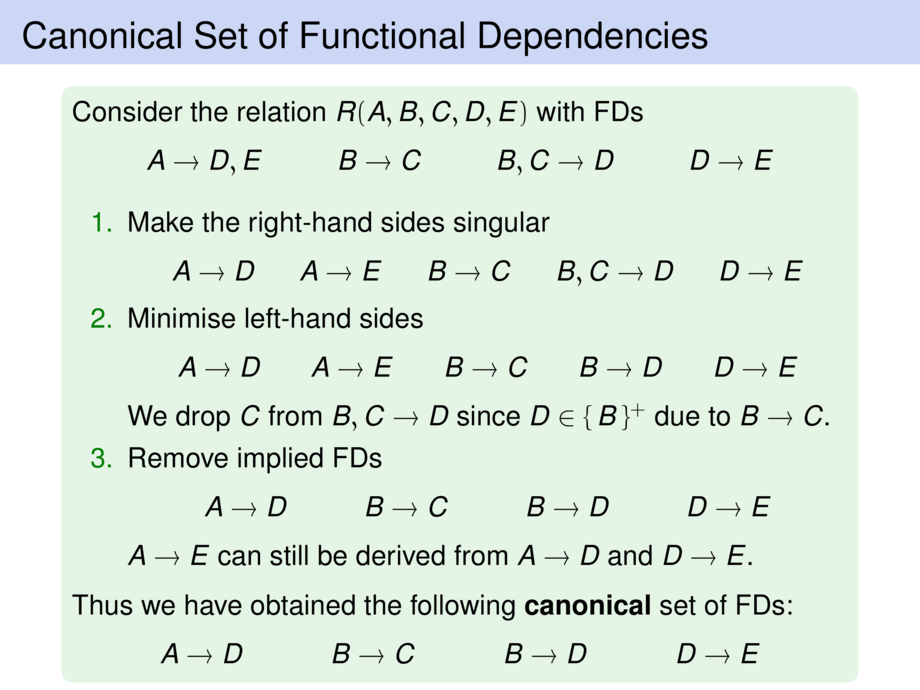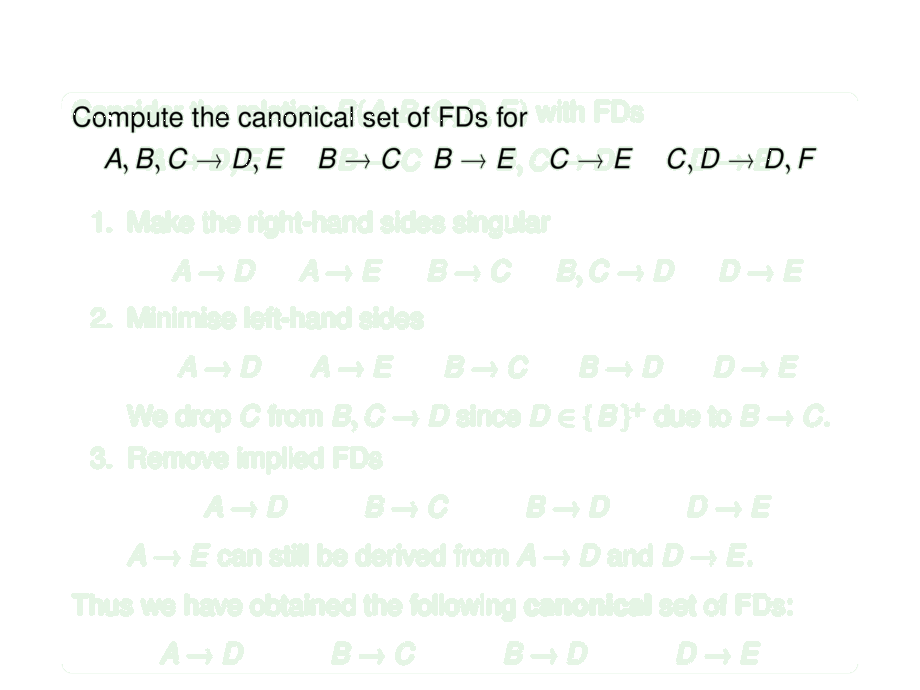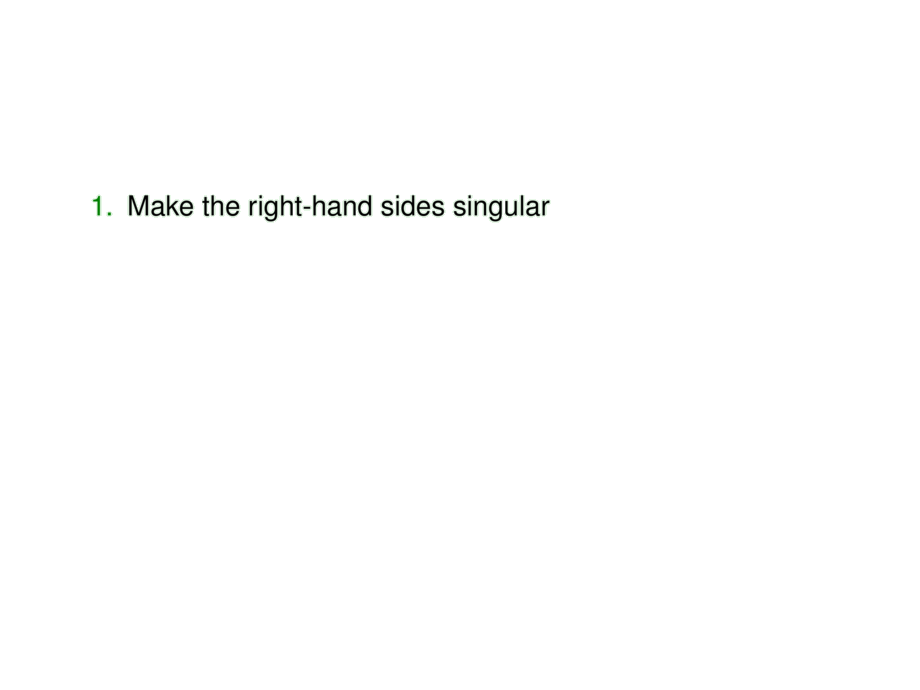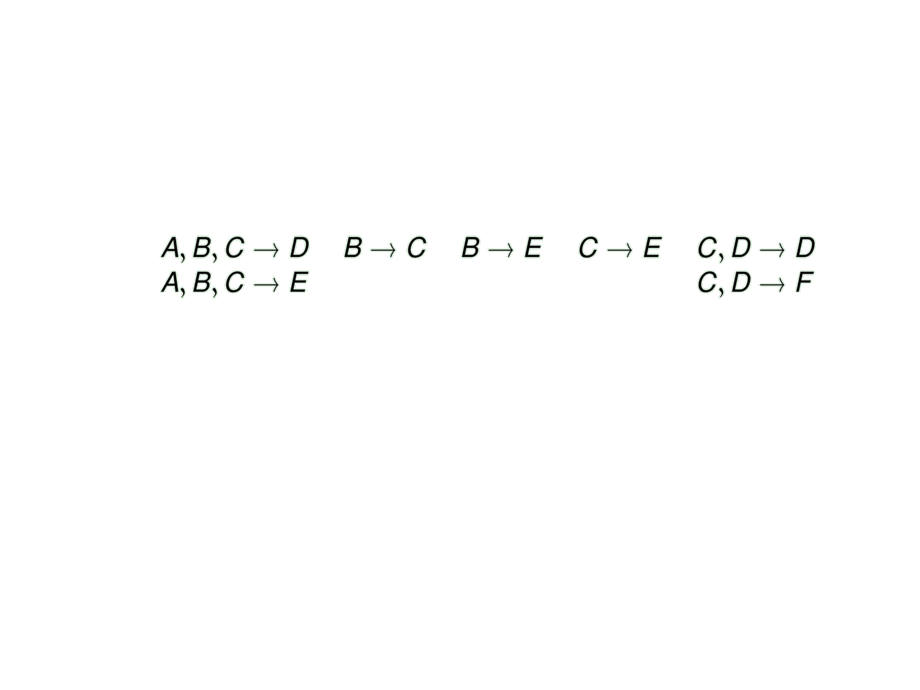



































































































104/291
\begin{frame}
\frametitle{Canonical Set of Functional Dependencies}
\begin{exampleblock}{}
Compute the canonical set of FDs for \vspace{-.5ex}
\begin{talign}
A,B,C &\to D,E &
B &\to C &
B &\to E &
C &\to E &
C,D &\to D,F
\end{talign}\vspace{-3ex}
\begin{enumerate}
\pause
\item
Make the right-hand sides singular\pause\vspace{-.5ex}
\begin{talign}
A,B,C &\to D &
B &\to C &
B &\to E &
C &\to E &
C,D &\to D \\[-.5ex]
A,B,C &\to E &
&&&&&&
C,D &\to F
\end{talign}\vspace{-3ex}
\pause
\item Removing implied FDs:\pause\vspace{-.5ex}
\begin{talign}
A,B,C &\to E &
B &\to E &
C,D &\to D
\end{talign}
This results in \vspace{-.5ex}
\begin{talign}
A,B,C &\to D &
B &\to C &
C &\to E &
C,D &\to F
\end{talign}\vspace{-3ex}
\pause
\item
Minimise left-hand sides\pause\vspace{-.5ex}
\begin{talign}
A,B &\to D &
B &\to C &
C &\to E &
C,D &\to F
\end{talign}
We drop $C$ from $A,B,C \to D$ since $D \in \{\, A,B \,\}^+$.
\smallskip
\end{enumerate}
\pause
There is nothing more that can be removed.
% A,B -> D; B -> C; C -> E; C,D -> F
\end{exampleblock}
\end{frame}

